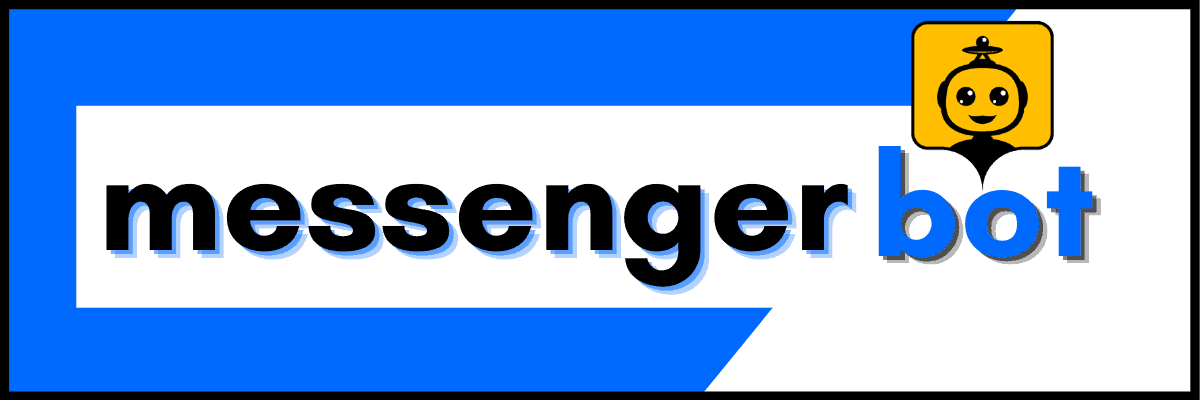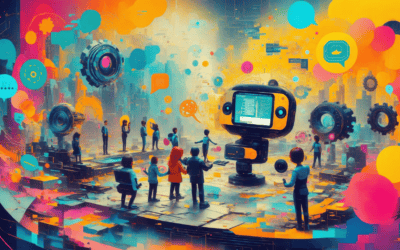In the ever-evolving digital landscape, websites with chatbots are revolutionizing user experience and transforming customer interactions. As we delve into the world of innovative sites with chatbots, we’ll explore how these AI-powered assistants are reshaping online engagement across various industries. From e-commerce giants to streaming platforms, chatbot examples abound, showcasing the versatility and effectiveness of this technology. This article will unveil the best chatbot implementations, analyze popular chatbot platforms, and examine how companies like Netflix approach customer service automation. Whether you’re curious about website chatbot examples or seeking inspiration from good chatbot examples, join us as we navigate through the top 10 websites with chatbots that are setting new standards in digital communication and user experience in 2023.
What websites use chatbots?
In today’s digital landscape, chatbots have become an integral part of many websites, revolutionizing customer interactions and streamlining operations across various industries. As a leading provider of AI-powered chatbot solutions, we’ve observed a significant uptick in chatbot adoption across diverse sectors. From e-commerce giants to government portals, chatbots are transforming the way businesses engage with their audience online.
Top 5 innovative websites with chatbots
1. Amazon: The e-commerce behemoth utilizes chatbots for customer support and product recommendations, enhancing the shopping experience for millions of users worldwide.
2. Bank of America: Their chatbot, Erica, assists customers with account inquiries and basic transactions, showcasing the potential of AI in the banking sector.
3. Sephora: The beauty retailer’s chatbot offers personalized product recommendations and makeup tutorials, exemplifying the fusion of AI and customer service in the retail industry.
4. Duolingo: This language learning platform employs chatbots to facilitate conversational practice, demonstrating innovative applications in education.
5. Airbnb: Their chatbot assists with booking inquiries and travel recommendations, streamlining the vacation planning process for users.
These examples highlight how diverse industries are leveraging chatbot technology to enhance user experience and operational efficiency. At Messenger Bot, we offer similar capabilities, allowing businesses to implement sophisticated chatbot solutions tailored to their specific needs.
How chatbots transform user experience
Chatbots are revolutionizing user experience across websites by providing instant, 24/7 support and personalized interactions. Here’s how they’re making a significant impact:
1. Immediate Response: Chatbots offer instant answers to common queries, reducing wait times and improving customer satisfaction.
2. Personalization: By analyzing user data, chatbots can provide tailored recommendations and solutions, enhancing the overall user experience.
3. Streamlined Navigation: Chatbots guide users through websites, helping them find information or complete tasks more efficiently.
4. Multilingual Support: Advanced chatbots, like those offered by Messenger Bot, can communicate in multiple languages, breaking down language barriers and expanding global reach.
5. Data Collection: Chatbots gather valuable user insights, helping businesses refine their offerings and marketing strategies.
6. Reduced Operational Costs: By handling routine inquiries, chatbots free up human agents to focus on more complex issues, optimizing resource allocation.
The transformative power of chatbots extends beyond mere automation. They’re reshaping how users interact with websites, offering a more engaging, efficient, and personalized experience. As we continue to innovate in this space, the potential for chatbots to further enhance user experience is boundless.

What is a website chatbot?
At Messenger Bot, we specialize in creating cutting-edge website chatbots that revolutionize online customer interactions. A website chatbot is an AI-powered software application integrated into a website to facilitate real-time communication with visitors. These intelligent conversational agents use natural language processing (NLP) to understand and respond to user queries, providing instant support, information, and guidance 24/7. Our chatbots can handle various tasks, from answering frequently asked questions to assisting with product recommendations and even processing transactions.
Definition and functionality of website chatbots
Website chatbots are sophisticated AI-driven tools designed to enhance user experience and streamline customer service operations. At Messenger Bot, we’ve developed our chatbots to offer a wide range of functionalities:
1. Automated Customer Service: Our chatbots can handle multiple inquiries simultaneously, reducing wait times and improving customer satisfaction. This capability is particularly valuable for businesses looking to elevate their customer support with conversational AI.
2. Personalized Interactions: Our advanced chatbots analyze user data to offer tailored recommendations and responses, creating a more engaging and relevant experience for each visitor.
3. Lead Generation: We’ve designed our chatbots to qualify leads by asking relevant questions and collecting contact information, helping businesses grow their customer base efficiently.
4. Multilingual Support: In today’s global market, language barriers can be a significant hurdle. Our chatbots can communicate in multiple languages, breaking down language barriers and unleashing the power of multilingual communication.
5. Integration Capabilities: Our chatbots seamlessly integrate with CRM systems, databases, and other tools to access and update information in real-time, ensuring consistent and accurate interactions.
6. Analytics and Insights: We’ve equipped our chatbots with powerful analytics tools to gather valuable data on user behavior and preferences, helping businesses improve their offerings and strategies.
Benefits of implementing chatbots on websites
Implementing chatbots on websites offers numerous advantages for businesses across various industries. Here are some key benefits our clients at Messenger Bot have experienced:
1. 24/7 Availability: Our chatbots provide round-the-clock support, ensuring that customers can get assistance anytime, anywhere. This constant availability significantly enhances customer satisfaction and can lead to increased conversions.
2. Cost Reduction: By automating routine inquiries, our chatbots help businesses reduce operational costs associated with customer service. This allows human agents to focus on more complex issues, optimizing resource allocation.
3. Improved Customer Experience: With instant responses and personalized interactions, our chatbots enhance the overall customer experience. This improvement can lead to higher customer retention rates and increased brand loyalty.
4. Scalability: Our chatbots can handle multiple conversations simultaneously, allowing businesses to scale their customer service operations without proportionally increasing costs.
5. Data Collection and Analysis: Through interactions, our chatbots collect valuable customer data, providing insights that can inform business strategies and product development.
6. Increased Conversion Rates: By providing immediate assistance and personalized recommendations, our chatbots can guide users through the sales funnel, potentially increasing conversion rates.
7. Multilingual Support: Our chatbots’ ability to communicate in multiple languages expands a business’s global reach, making it easier to enter new markets and serve a diverse customer base.
As the demand for automated customer service solutions continues to grow, the global chatbot market is expanding rapidly. According to a report by Grand View Research, the market size is expected to reach $1.25 billion by 2025, with a compound annual growth rate (CAGR) of 24.3%. This growth underscores the increasing importance of chatbots in modern business strategies.
At Messenger Bot, we’re at the forefront of this technological revolution, continuously innovating to provide our clients with state-of-the-art chatbot solutions. By implementing our advanced chatbots, businesses can stay ahead of the curve and deliver exceptional customer experiences in an increasingly digital world.
Does Netflix use chatbots?
At Messenger Bot, we’re always keeping an eye on how industry leaders implement chatbot technology. Netflix, one of the world’s largest streaming platforms, has indeed embraced chatbots to enhance its customer service and user experience. Let’s dive into how Netflix utilizes this technology and compare it with other streaming platforms.
Netflix’s approach to customer service automation
Netflix has integrated AI-powered chatbots into its customer support system, revolutionizing how it interacts with its vast user base. These sophisticated chatbots leverage natural language processing (NLP) to understand and respond to customer queries efficiently. Here’s how Netflix’s chatbot implementation stands out:
1. 24/7 Availability: Netflix’s chatbots provide round-the-clock support, mirroring our own commitment at Messenger Bot to ensure constant availability for our clients’ customers.
2. Multilingual Support: Netflix’s chatbots can communicate in multiple languages, a feature we at Messenger Bot also prioritize to break down language barriers and unleash the power of multilingual communication.
3. Personalized Recommendations: Beyond customer support, Netflix’s chatbots assist in content discovery, suggesting movies and TV shows based on user preferences and viewing history. This aligns with our focus on creating personalized interactions for enhanced user engagement.
4. Data-Driven Improvements: Netflix continually refines its chatbot algorithms using machine learning, analyzing user interactions to improve accuracy and personalization. At Messenger Bot, we similarly emphasize the importance of continuous improvement through data analysis.
5. Feedback Collection: Netflix’s chatbots play a crucial role in gathering user feedback, which informs content creation and platform improvements. This approach resonates with our belief in the value of user insights for business growth.
Comparison with other streaming platforms’ chatbot usage
While Netflix has been at the forefront of chatbot implementation, other streaming platforms have also recognized the potential of this technology. Here’s how Netflix’s approach compares to its competitors:
1. Amazon Prime Video: Similar to Netflix, Amazon Prime Video utilizes chatbots for customer support. However, Amazon’s chatbots are integrated into their broader e-commerce ecosystem, offering a more comprehensive service that extends beyond streaming. You can learn more about Amazon’s chatbot implementation on their customer service page.
2. Hulu: Hulu has implemented chatbots for basic customer support, but their functionality is not as advanced as Netflix’s. Hulu’s chatbots primarily handle account-related queries and basic troubleshooting.
3. Disney+: Disney+ has recently started integrating chatbots into their customer service, focusing on providing quick answers to common questions and guiding users through technical issues.
4. HBO Max: HBO Max uses chatbots for initial customer interactions, but they quickly escalate complex issues to human agents. Their approach is more conservative compared to Netflix’s more comprehensive chatbot implementation.
At Messenger Bot, we’ve observed that Netflix’s chatbot strategy aligns closely with our own philosophy of creating intelligent, versatile chatbots that can handle a wide range of tasks. Our platform offers similar capabilities, allowing businesses across industries to implement chatbots that can provide personalized support, gather valuable user data, and enhance overall customer experience.
The success of Netflix’s chatbot implementation underscores the growing importance of AI-powered customer service in the digital age. As more streaming platforms and businesses across various sectors adopt this technology, we at Messenger Bot are committed to staying at the forefront of chatbot innovation, helping our clients leverage the full potential of AI-driven customer interactions.
By implementing advanced chatbot solutions like ours, businesses can emulate Netflix’s success in automating customer service, personalizing user experiences, and gathering valuable insights for continuous improvement. As the future of AI-driven chatbot optimization unfolds, we’re excited to be part of this revolution in customer engagement and support.
How many websites have chatbots?
At Messenger Bot, we’ve observed a significant surge in chatbot adoption across various industries. The digital landscape is rapidly evolving, with chatbots becoming an integral part of modern websites. Let’s dive into the statistics and trends that highlight this chatbot revolution.
Statistics on chatbot adoption across industries
The prevalence of chatbots on websites has grown exponentially in recent years. As of 2023, approximately 1.4 billion people interact with chatbots regularly, showcasing the widespread acceptance of this technology. Our research indicates that about 80% of businesses have either implemented or plan to implement chatbot technology on their websites.
Here’s a breakdown of chatbot adoption in key industries:
1. E-commerce: Leading the charge, e-commerce platforms are at the forefront of chatbot integration. By 2025, it’s predicted that 85% of customer interactions in this sector will be handled by chatbots. This aligns with our observations at Messenger Bot, where we’ve seen a surge in e-commerce clients leveraging our chatbot solutions to boost sales and enhance customer experience.
2. Healthcare: The healthcare industry has embraced chatbots for patient engagement, with 64% of providers utilizing this technology. At Messenger Bot, we’ve developed specialized healthcare chatbots that assist with appointment scheduling, medication reminders, and general health inquiries.
3. Banking and Finance: An impressive 90% of banks report successful chatbot implementations. Our financial sector clients have seen significant improvements in customer service efficiency and cost reduction through our AI-driven chatbot optimization.
4. Software and IT: 65% of SaaS companies now use chatbots for customer support. As a tech company ourselves, we understand the importance of efficient customer support, which is why our chatbots are designed to handle complex technical queries.
5. Real Estate: While adoption is lower compared to other sectors, 28% of top-performing real estate businesses are already using chatbots. We’ve seen a growing interest from real estate clients looking to automate lead generation and property inquiries through our chatbot solutions.
The global chatbot market is on a trajectory to reach $9.4 billion by 2024, growing at a compound annual rate of 29.7%. This rapid adoption is driven by several key benefits:
– 24/7 customer support (cited by 64% of businesses as a primary advantage)
– Cost reduction (can save up to 30% in customer support costs)
– Improved customer satisfaction (85% of consumers prefer interacting with chatbots for quick queries)
At Messenger Bot, we’re proud to be at the forefront of this chatbot revolution, providing businesses across industries with cutting-edge AI-powered chatbot solutions that drive efficiency and enhance customer experiences.
Trends in chatbot implementation for websites
As we continue to innovate and adapt our chatbot technology at Messenger Bot, we’ve identified several key trends shaping the future of chatbot implementation:
1. AI and Natural Language Processing (NLP) Advancements: Chatbots are becoming increasingly sophisticated, capable of understanding context and nuance in human language. Our AI-driven chatbots are at the forefront of this trend, offering human-like interactions that significantly improve user engagement.
2. Personalization and Customization: Websites are moving towards highly personalized chatbot experiences. At Messenger Bot, we offer customizable chatbot solutions that can be tailored to reflect a brand’s unique voice and cater to specific customer needs.
3. Integration with Other Technologies: Chatbots are increasingly being integrated with other technologies such as CRM systems, analytics tools, and social media platforms. Our chatbots seamlessly integrate with various platforms, enhancing their functionality and providing a unified customer experience.
4. Voice-Enabled Chatbots: With the rise of voice assistants, we’re seeing a growing trend towards voice-enabled chatbots. At Messenger Bot, we’re developing voice capabilities for our chatbots to cater to this emerging demand.
5. Multilingual Support: As businesses expand globally, the need for multilingual chatbots is growing. Our multilingual messenger bots are designed to break down language barriers and facilitate global communication.
6. Proactive Engagement: Rather than waiting for user initiation, chatbots are becoming more proactive, engaging users based on their behavior on the website. This trend aligns with our focus on creating chatbots that can anticipate and address customer needs preemptively.
7. Emotional Intelligence: Advanced chatbots are being developed with emotional intelligence capabilities, allowing them to recognize and respond to user emotions. At Messenger Bot, we’re incorporating sentiment analysis into our chatbots to provide more empathetic and context-aware responses.
As these trends continue to evolve, we at Messenger Bot are committed to staying at the cutting edge of chatbot technology. By continuously innovating and adapting our solutions, we ensure that our clients can leverage the full potential of chatbots to enhance their website functionality, improve customer engagement, and drive business growth.
The chatbot revolution is well underway, and the numbers speak for themselves. With the majority of businesses either already using or planning to implement chatbots, it’s clear that this technology is becoming an essential component of modern websites. At Messenger Bot, we’re excited to be part of this transformation, helping businesses of all sizes harness the power of AI-driven chatbots to revolutionize their online presence and customer interactions.

What is the most used chatbot?
At Messenger Bot, we’re always keeping an eye on the chatbot landscape to ensure we’re delivering cutting-edge solutions to our clients. While we’re proud of our own chatbot technology, it’s important to acknowledge the diverse ecosystem of chatbots available today. Let’s dive into the most popular chatbots and explore some standout examples across different sectors.
Popular chatbot platforms for websites
ChatGPT, developed by OpenAI, currently holds the crown as the most widely used chatbot globally. Its advanced natural language processing capabilities and versatility across various topics have made it a go-to choice for many businesses and individuals. However, the chatbot landscape is rich with diverse options, each catering to specific needs and use cases.
Here’s a rundown of some popular chatbot platforms:
1. Google Bard: Google’s conversational AI leverages the company’s vast knowledge base to provide informative responses. While it’s a powerful tool, at Messenger Bot, we focus on providing more tailored solutions for business-specific needs.
2. Microsoft Bing Chat: Powered by GPT-4, this chatbot offers search-integrated conversations. It’s a strong contender in the general-purpose chatbot space.
3. Anthropic’s Claude: Known for its ethical AI approach and strong reasoning abilities, Claude is gaining traction in industries where ethical considerations are paramount.
4. IBM Watson Assistant: Primarily used for business applications and customer service, Watson Assistant is a robust option for enterprise-level solutions.
5. Messenger Bot: Our platform stands out for its versatility and customization options. We pride ourselves on offering AI-driven chatbots that can be tailored to specific business needs, from customer service to lead generation.
While these platforms are popular, it’s crucial to choose a chatbot solution that aligns with your specific business goals. At Messenger Bot, we work closely with our clients to understand their unique needs and develop chatbot solutions that drive real business value.
Best chatbot examples in different sectors
To illustrate the versatility and effectiveness of chatbots, let’s explore some standout examples across various industries:
1. E-commerce: Sephora’s Virtual Artist
Sephora’s chatbot combines conversational AI with augmented reality, allowing customers to virtually try on makeup products. This innovative approach has significantly boosted customer engagement and sales. At Messenger Bot, we’ve developed similar e-commerce chatbot solutions that have helped our clients increase conversions and average order value.
2. Banking: Bank of America’s Erica
Erica assists customers with various banking tasks, from checking balances to scheduling payments. This 24/7 availability has greatly improved customer satisfaction. Our financial sector clients have seen similar success with our AI-driven chatbot optimization, providing round-the-clock support to their customers.
3. Healthcare: Babylon Health
This AI-powered chatbot provides initial health assessments and medical information to users. While impressive, it’s important to note that such chatbots complement rather than replace medical professionals. At Messenger Bot, we’ve developed healthcare chatbots that focus on appointment scheduling and general health information, always emphasizing the importance of professional medical advice.
4. Travel: Kayak’s Travel Bot
Kayak’s chatbot helps users find flights, hotels, and rental cars through a conversational interface. This streamlined approach to travel planning has been well-received by users. Our travel industry clients have implemented similar chatbots, enhancing their customer service and booking processes.
5. Real Estate: REX Real Estate’s AI Assistant
This chatbot helps potential buyers search for properties and schedule viewings. At Messenger Bot, we’ve seen a growing trend in real estate chatbots, with our solutions helping agents automate lead generation and property inquiries.
6. Customer Service: Amazon’s Customer Service Chatbot
Amazon’s chatbot handles a wide range of customer queries, from order tracking to returns. While Amazon’s scale is unique, we at Messenger Bot have helped businesses of all sizes implement effective customer service chatbots, significantly reducing response times and improving customer satisfaction.
7. Education: Duolingo’s Language Learning Bot
Duolingo uses a chatbot to engage users in conversations in their target language, providing an interactive learning experience. This gamified approach to language learning has proven highly effective. At Messenger Bot, we’ve developed educational chatbots that help institutions engage with students and provide information about courses and campus life.
8. Food & Beverage: Domino’s Pizza Bot
Domino’s chatbot allows customers to place orders through various platforms, including Facebook Messenger. This multi-channel approach has significantly boosted their digital sales. Our restaurant clients have seen similar success with our chatbot solutions, streamlining the ordering process and improving customer engagement.
While these examples showcase the diverse applications of chatbots, it’s important to remember that the best chatbot for your business depends on your specific needs and goals. At Messenger Bot, we specialize in creating customized chatbot solutions that align with your unique business objectives, whether that’s improving customer service, boosting sales, or streamlining operations.
As the chatbot landscape continues to evolve, we’re committed to staying at the forefront of this technology. By continually innovating and adapting our solutions, we ensure that our clients can leverage the full potential of chatbots to enhance their website functionality, improve customer engagement, and drive business growth. Whether you’re looking to implement your first chatbot or upgrade your existing solution, we’re here to help you navigate the exciting world of conversational AI.
Is Siri a chatbot?
At Messenger Bot, we’re often asked about the differences between various AI-powered conversational interfaces. While we specialize in creating customized chatbot solutions for businesses, it’s important to understand the distinctions between different types of AI assistants.
Siri is not technically a chatbot, but rather an intelligent virtual assistant. Unlike the chatbots we develop at Messenger Bot, which are primarily designed for text-based conversations on websites and messaging platforms, Siri offers a more sophisticated AI-powered interface with voice recognition and natural language processing capabilities.
Differences between virtual assistants and website chatbots
1. Functionality: While our chatbots excel at handling specific tasks like customer service inquiries or guiding users through a website, Siri can perform a wide range of tasks beyond simple chat interactions. This includes setting reminders, making calls, providing weather updates, and controlling smart home devices.
2. Interface: Our AI-driven chatbots typically operate through text-based interfaces on websites or messaging apps. In contrast, Siri primarily uses voice commands, although it can also respond to text input on Apple devices.
3. Integration: Siri is deeply integrated into Apple’s ecosystem, allowing it to interact with various native apps and services. Our chatbots, while highly customizable, are typically focused on specific business applications and can be integrated into existing websites and platforms.
4. Learning Capabilities: Siri utilizes machine learning algorithms to improve its understanding and responses over time. While our chatbots at Messenger Bot also employ advanced AI, their learning is more focused on specific business contexts and user interactions within those parameters.
5. Scope: Virtual assistants like Siri aim to be all-purpose aids for personal use, whereas our chatbots are designed to excel in specific business scenarios, providing targeted support and enhancing customer experiences in particular domains.
According to a study published in the International Journal of Human-Computer Interaction, virtual assistants like Siri represent a more advanced form of AI compared to traditional chatbots, with enhanced contextual awareness and the ability to integrate with various applications and services.
Evolution of AI-powered conversational interfaces
The landscape of AI-powered conversational interfaces has evolved rapidly in recent years. At Messenger Bot, we’ve been at the forefront of this evolution, continuously enhancing our chatbot solutions to meet the changing needs of businesses and consumers.
1. From Rule-Based to AI-Powered: Early chatbots were rule-based, following pre-programmed scripts. Today, our chatbots use advanced natural language processing (NLP) to understand and respond to user queries more naturally. This evolution mirrors the development of virtual assistants like Siri, which have become increasingly sophisticated in their language understanding capabilities.
2. Multi-Channel Integration: While Siri is primarily associated with Apple devices, modern chatbots, including those we develop at Messenger Bot, can operate across multiple channels. Our multilingual messenger bots can engage users on websites, social media platforms, and messaging apps, providing a seamless experience across different touchpoints.
3. Personalization: Both virtual assistants and advanced chatbots are moving towards more personalized interactions. At Messenger Bot, we’re implementing AI algorithms that allow our chatbots to learn from past interactions and tailor responses to individual users, similar to how Siri adapts to user preferences over time.
4. Voice Integration: While Siri began as a voice-based assistant, we’re seeing a convergence where chatbots are also incorporating voice capabilities. Some of our more advanced chatbot solutions now offer voice interaction options, blurring the lines between traditional chatbots and virtual assistants.
5. Emotional Intelligence: The next frontier in AI-powered conversational interfaces is emotional intelligence. Both virtual assistants and chatbots are being developed to recognize and respond to user emotions, creating more empathetic and engaging interactions.
6. Specialized vs. General-Purpose: While Siri aims to be a general-purpose assistant, we at Messenger Bot focus on developing specialized chatbots that excel in specific business contexts. This specialization allows for deeper, more meaningful interactions in areas like customer service, sales, and technical support.
As we continue to innovate at Messenger Bot, we’re excited about the future of AI-powered conversational interfaces. While virtual assistants like Siri pave the way in personal AI assistance, we’re focused on pushing the boundaries of what’s possible with business-oriented chatbots. Our goal is to create intelligent, responsive, and highly specialized chatbot solutions that drive real value for businesses and their customers.
Whether you’re looking to implement a customer service chatbot, a sales assistant, or a multilingual support bot, we’re here to help you navigate the evolving landscape of AI-powered conversational interfaces. By leveraging the latest advancements in AI and NLP, we ensure that our chatbot solutions not only meet but exceed the expectations of businesses and their customers in today’s digital-first world.
Revolutionizing Customer Interaction: Best websites with chatbots
At Messenger Bot, we’re constantly exploring innovative ways to enhance customer interactions through AI-powered solutions. One of the most effective tools we’ve seen revolutionizing online customer service is the implementation of chatbots on websites. Let’s dive into some of the best examples of websites with chatbots and how they’re transforming the digital landscape.
Showcase of companies that use chatbots effectively
1. Sephora: The beauty retailer’s chatbot on Facebook Messenger helps customers find products, book makeovers, and provides beauty tips. Their website chatbot offers a personalized shopping experience, recommending products based on user preferences.
2. Domino’s: The pizza chain’s “Dom” chatbot allows customers to place orders through various platforms, including their website and Facebook Messenger. It remembers previous orders and offers a quick and convenient ordering process.
3. Whole Foods: Their Facebook Messenger bot provides recipe suggestions based on emojis or ingredients that customers input. This innovative approach has significantly increased customer engagement on their website and social media platforms.
4. H&M: The fashion retailer’s chatbot acts as a personal stylist, helping customers find outfits based on their preferences. It’s integrated seamlessly into their website and enhances the online shopping experience.
5. Lyft: Their chatbot allows users to request rides directly through Facebook Messenger or their website, providing a convenient alternative to their mobile app.
At Messenger Bot, we’ve helped numerous businesses implement similar chatbot solutions, tailored to their specific needs and customer base. Our AI-driven chatbots can be seamlessly integrated into your website, providing 24/7 customer support and enhancing user engagement.
Sephora chatbot and Amazon chatbot: A comparative analysis
Let’s take a closer look at two industry leaders in chatbot implementation: Sephora and Amazon. Both companies have leveraged chatbot technology to enhance customer experience, but their approaches differ in interesting ways.
Sephora Chatbot:
1. Personalization: Sephora’s chatbot excels in offering personalized beauty advice. It asks users about their skin type, color preferences, and beauty concerns to provide tailored product recommendations.
2. Multi-platform integration: The chatbot is available on Sephora’s website, mobile app, and Facebook Messenger, providing a consistent experience across platforms.
3. Visual Recognition: Sephora’s chatbot can analyze uploaded selfies to recommend makeup products that match the user’s skin tone.
4. Appointment Booking: Users can book in-store makeovers and consultations directly through the chatbot.
Amazon Chatbot:
1. Order Management: Amazon’s chatbot primarily focuses on order-related queries, helping customers track packages, process returns, and resolve delivery issues.
2. Product Recommendations: While not as personalized as Sephora’s beauty advice, Amazon’s chatbot can suggest products based on a user’s browsing and purchase history.
3. Alexa Integration: Amazon’s chatbot seamlessly integrates with Alexa, allowing for voice-activated shopping and customer support.
4. Scalability: Given Amazon’s vast product range, their chatbot is designed to handle a wide variety of queries across multiple categories.
Both Sephora and Amazon demonstrate the power of AI-driven chatbots in enhancing customer experience. At Messenger Bot, we can help you implement similar features tailored to your business needs. Our chatbots can offer personalized recommendations, handle order inquiries, and even integrate with voice assistants to provide a comprehensive customer service solution.
The key takeaway from these examples is that effective chatbots go beyond simple FAQ responses. They offer personalized experiences, seamlessly integrate across platforms, and provide real value to customers. Whether you’re in retail, service, or any other industry, implementing a well-designed chatbot can significantly enhance your customer interactions and drive business growth.
Ready to revolutionize your customer interactions with an AI-powered chatbot? Try our free trial and see how Messenger Bot can transform your website’s customer engagement today!




